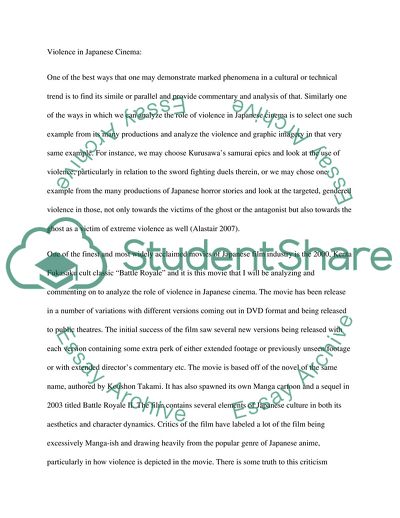Cite this document
(The Role of Violence in Japanese Cinema Coursework, n.d.)
The Role of Violence in Japanese Cinema Coursework. https://studentshare.org/visual-arts-film-studies/1815303-sensational-violence-injury-varying-horrid-forms-of-death-such-things-have-long-made-up-much-of-popular-cinema-donald-richie-2001discuss-the-role-of-violence-in-japanese-cinema
The Role of Violence in Japanese Cinema Coursework. https://studentshare.org/visual-arts-film-studies/1815303-sensational-violence-injury-varying-horrid-forms-of-death-such-things-have-long-made-up-much-of-popular-cinema-donald-richie-2001discuss-the-role-of-violence-in-japanese-cinema
(The Role of Violence in Japanese Cinema Coursework)
The Role of Violence in Japanese Cinema Coursework. https://studentshare.org/visual-arts-film-studies/1815303-sensational-violence-injury-varying-horrid-forms-of-death-such-things-have-long-made-up-much-of-popular-cinema-donald-richie-2001discuss-the-role-of-violence-in-japanese-cinema.
The Role of Violence in Japanese Cinema Coursework. https://studentshare.org/visual-arts-film-studies/1815303-sensational-violence-injury-varying-horrid-forms-of-death-such-things-have-long-made-up-much-of-popular-cinema-donald-richie-2001discuss-the-role-of-violence-in-japanese-cinema.
“The Role of Violence in Japanese Cinema Coursework”. https://studentshare.org/visual-arts-film-studies/1815303-sensational-violence-injury-varying-horrid-forms-of-death-such-things-have-long-made-up-much-of-popular-cinema-donald-richie-2001discuss-the-role-of-violence-in-japanese-cinema.


